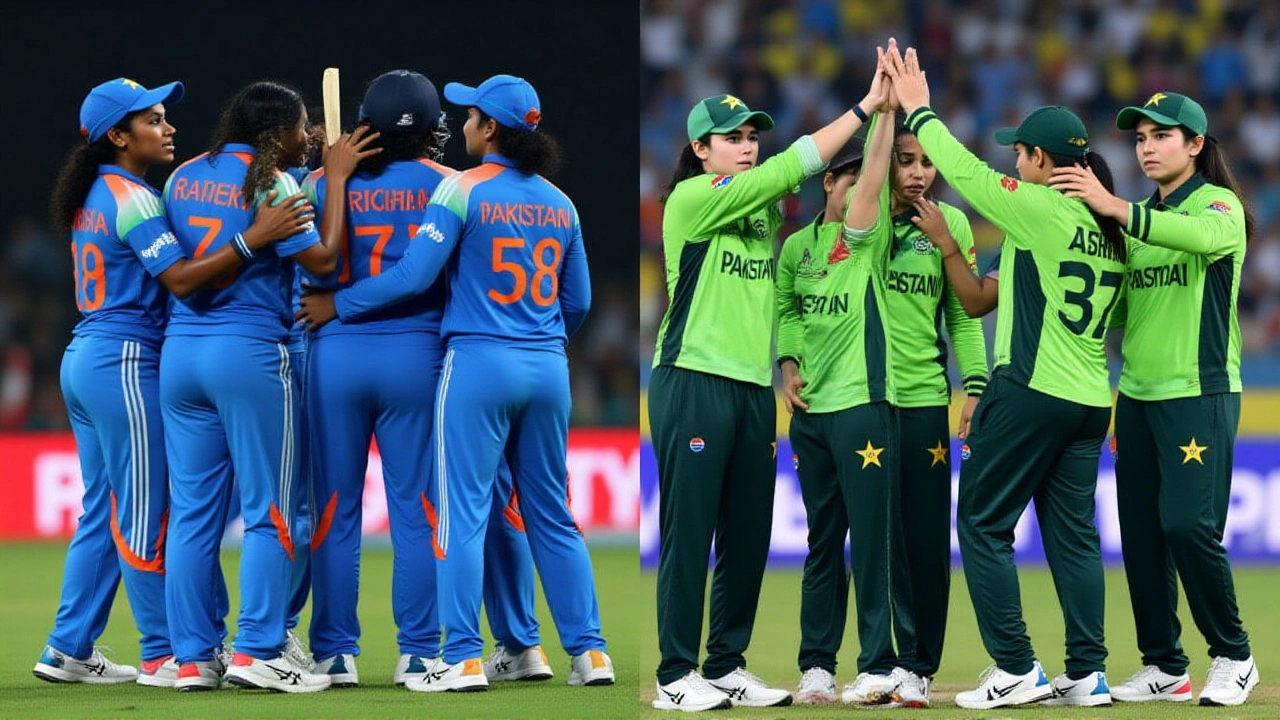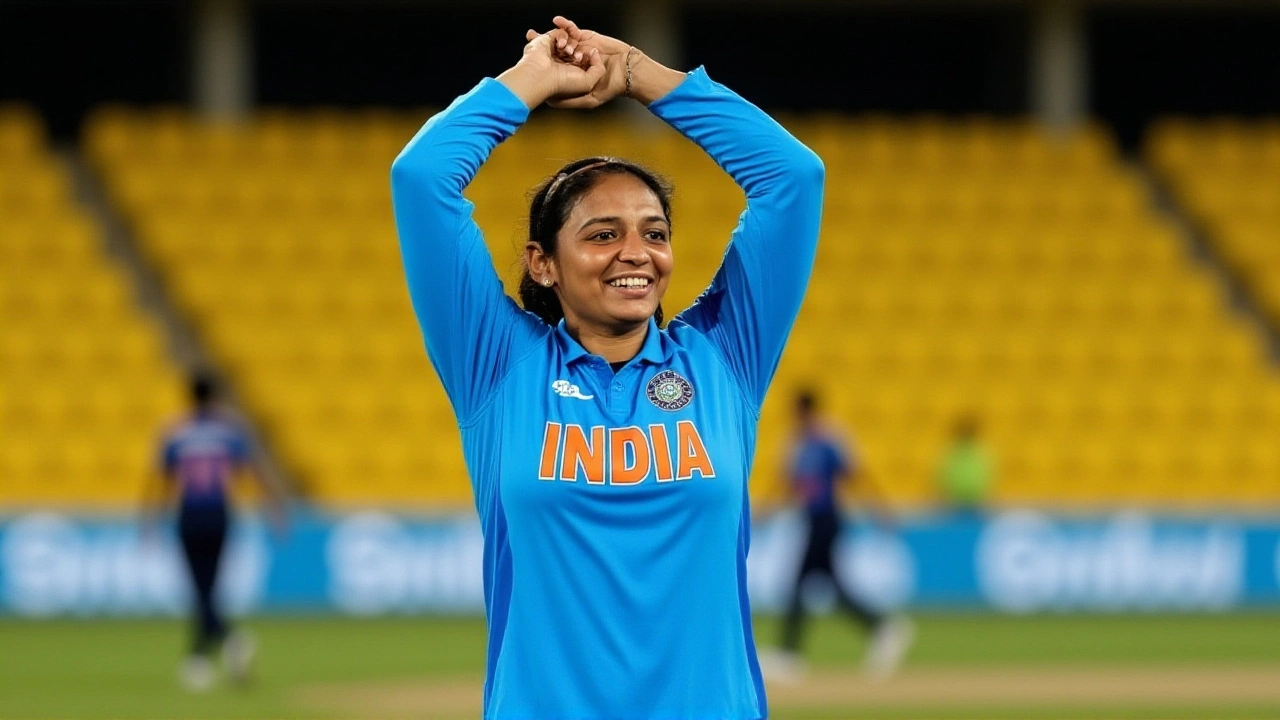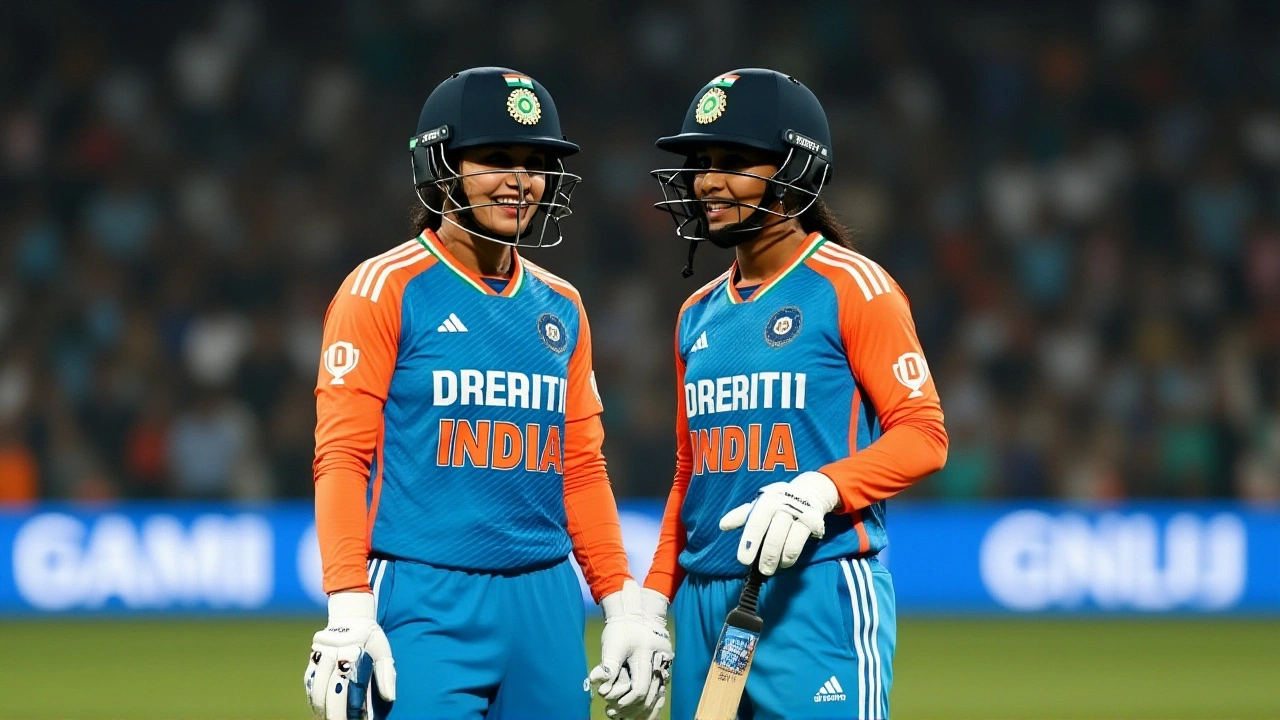India crushes Pakistan by 88 runs in controversial ICC Women's ODI World Cup clash

When India women's cricket team thumped Pakistan women's cricket team by 88 runs in the sixth fixture of the ICC Women's ODI World Cup 2025Colombo, Sri Lanka, it wasn’t just a win – it was a statement of supremacy.
The match, played on 12 February 2025 at the iconic R. Premadasa Stadium, saw India vault to the top of the points table with two straight victories. What made the day unforgettable wasn’t only the margin; a nail‑biting run‑out controversy involving Pakistan opener Muneeba Ali added drama that will be discussed for weeks.
Match overview: India’s all‑round dominance
Winning the toss, India elected to field, trusting their pace attack to nip early wickets. Deepti Sharma opened the bowling with a searing inswinger that rattled the Pakistani top order. She finished with figures of 3 for 22, including a crucial wicket of opener Sidra Amin, who managed only 14 runs.
India’s chase was a masterclass in measured aggression. Captain Harmanpreet Kaur anchored with a composed 67 off 78 balls, while Smriti Mandhana smashed 55 at a brisk strike‑rate of 132. The lower order added the finishing touches, taking the total to 261/4 in 50 overs.
Pakistan’s reply never got off the ground. After the early dismissal of Muneeba Ali, the middle order crumbled under relentless pressure from Kranti Gaud and Richa Ghosh. The final score of 173 all out sealed an 88‑run defeat.
The controversial run‑out that stole the headlines
It was the fourth over when the drama unfolded. Gaud bowled a delivery that trapped Ali just outside the off‑side crease. The fielding side appealed for LBW, but wicket‑keeper Richa Ghosh seemed hesitant, and captain Kaur opted not to refer the decision to the TV umpire.
While the umpire deliberated, Sharma lunged for a direct hit at the striker’s end. The ball sped to the stumps as Ali was scrambling back, but the third umpire’s first review flashed ‘NOT OUT’ on the big screen – her bat appeared to have slid back inside the crease.
Something felt off. The on‑field officials called for a second review, this time scrutinising whether the bat was grounded when the ball struck. Slow‑motion replay showed the bat hanging in the air, a split‑second before the bails were dislodged. The decision was overturned, and Ali was given out for just 2 runs off 12 balls.
Pakistan captain Fatima Sana erupted, marching up to the third‑umpire’s booth and confronting the officials. “We deserve a clear explanation,” she shouted, her voice echoing across the stadium. The incident sparked a social‑media firestorm, with pundits debating the consistency of run‑out protocol.
Performance highlights and statistics
- India posted 261/4 – the highest total so far in the tournament.
- Deepti Sharma claimed 3 wickets, her best figures of the World Cup.
- Harmanpreet Kaur’s 67 runs came off 78 balls, a strike‑rate of 86.
- Pakistan’s top‑order managed just 34 runs before the first wicket fell.
- The run‑out decision was reviewed twice – a rarity in ODI cricket.
Analysts note that India’s net‑run rate now sits at +1.45, comfortably ahead of the next best side, while Pakistan’s net‑run rate plummeted to –1.02, making a World Cup survival scenario increasingly unlikely.

Reactions from players, officials and experts
“We executed our plan perfectly,” Kaur said in the post‑match interview. “The run‑out was unfortunate for our opponents, but it’s part of the game. Our focus is on the next match.”
Sharma, ever‑pragmatic, added, “The decision was clear on the replays. The laws state that the bat must be grounded. We respect the process, even if it’s painful for them.”
Pakistan’s Fatima Sana later expressed disappointment: “We felt the decision was harsh, especially after the initial ‘not out’ call. We will use this as motivation, but the umpiring standards need clarification.”
Cricket analyst Vivek Kumar pointed out that pre‑match win‑probability models had given India a 90% chance of victory. “Statistically, it was the expected outcome, but the margin and the controversy added layers that will influence upcoming fixtures,” he explained.
What this win means for the tournament
India now leads Group A with six points, having beaten New Zealand in their opening game as well. Their dominant performance puts them in a strong position to qualify for the semi‑finals, regardless of the outcome of their remaining group matches.
Pakistan, on the other hand, faces an uphill battle. With just two points and a negative net‑run rate, they must win their remaining three games by large margins to stay alive – a scenario that seems increasingly improbable.
The run‑out controversy could prompt the International Cricket Council (ICC) to review its review‑process guidelines, especially concerning the timing of multiple reviews in the same delivery. If changes are implemented, they may affect how future matches are adjudicated, potentially altering the tactical approach of teams in close contests.

Historical context: An unbroken streak
Before this World Cup, India and Pakistan had met eleven times in women’s ODIs, and India had never lost – a perfect 11‑0 record. The last encounter, in 2023, ended with a 107‑run win for India, highlighted by a century from Kaur and a five‑wicket haul from Sharma.
Maintaining the streak adds psychological weight to every future clash. For Pakistan, breaking the jinx has become a national sporting ambition, yet the odds appear stacked against them as the gap widens.
Frequently Asked Questions
How does the run‑out decision affect Pakistan’s chances in the World Cup?
Losing an opener for just two runs not only reduced Pakistan’s total by a crucial 30‑plus runs but also hurt their net‑run rate. With a negative rate of –1.02, they now need large‑margin wins in the remaining fixtures to stay in contention, making their path significantly steeper.
What were the key factors behind India’s 88‑run victory?
India’s success hinged on a balanced attack: early wickets from Deepti Sharma, a steady chase led by Harmanpreet Kaur, and aggressive fielding that produced the decisive run‑out. Their 261‑run total set a daunting target, while disciplined bowling kept Pakistan well below par.
Will the ICC change its review protocol after this controversy?
The ICC has indicated a review of its DRS (Decision Review System) guidelines, especially concerning multiple reviews on the same ball. While no rule change has been announced yet, the incident has intensified calls for clearer procedures to avoid similar confusion.
How does this result impact India’s standing in Group A?
India now tops Group A with six points and a superior net‑run rate, putting them in a commanding position to qualify for the knockout stage. Even a loss in the final group match would likely see them advance.
What does the unbeaten record mean for the India‑Pakistan rivalry?
India’s 12‑0 streak reinforces its dominance and adds psychological pressure on Pakistan to break the jinx. The rivalry has become synonymous with India’s supremacy in women’s cricket, a narrative that shapes fan expectations and media coverage.
India absolutely dominated, the scores were staggering, the margin was obscene, and yet the commentary keeps sugar‑coating the run‑out drama, as if it were a minor footnote, truly a sign of bias, the stats speak louder than any PR spin.
One might argue that victory is merely a construct, but the truth is encoded in the numbers.
Let’s break it down: India posted 261/4, a total that would intimidate any opponent, Deepti Sharma’s 3/22 set the tone early, and the fielding unit executed a perfect run‑out that, despite controversy, adhered to the laws, while Pakistan’s collapse underscores a deeper tactical deficiency.
i think india played real good, they kno wwhat they’re doin and the fans should loos like that.
What a fantastic win for India!
In the realm of competitive cricket, the performance manifested by the Indian side exemplifies a paradigm of strategic execution, whilst the Pakistani contingent exhibited notable lapses.
Honestly, the disparity is glaring 😊 – the Indian squad operates on a level of professionalism that far exceeds the expectations set for their opponents.
Come on team keep the fire burning we’ve got this we’re unstoppable
Analyzing the innings, it’s clear that the middle order’s discipline was key, and the bowlers’ variations kept pressure high throughout.
It is imperative to recognize that such dominance reflects not only athletic superiority but also the inherent strength of our nation’s sporting infrastructure.
This was a total circus
The Indian women's team showed a brilliance that transcended the ordinary, and every fan felt a surge of pride. Their batting lineup combined precision with flair, creating partnerships that seemed unbreakable. The opening partnership set a foundation that allowed the middle order to flourish without pressure. Each run was celebrated as a step toward a collective dream. The bowlers, especially Deepti Sharma, delivered with ferocity, turning every ball into a chance for a wicket. Even the fielders displayed agility, turning potential runs into crucial dismissals. The controversial run‑out, while debated, highlighted the importance of composure under scrutiny. It also reminded us that technology, when applied correctly, upholds the spirit of the game. Pakistan, despite their effort, could not match the intensity required at this level. Their early loss of Muneeba Ali was a turning point that shifted momentum irrevocably. Yet, every setback offers a lesson, and future matches will undoubtedly showcase growth. The supporters across the globe rallied behind the Indian side, creating an atmosphere of unity and celebration. This win not only boosts their net‑run rate but also strengthens their confidence heading into the knockout stages. Let us cherish this moment, applaud the athletes, and look forward to more exhilarating cricket. Together, we celebrate the triumph and anticipate even greater achievements ahead.